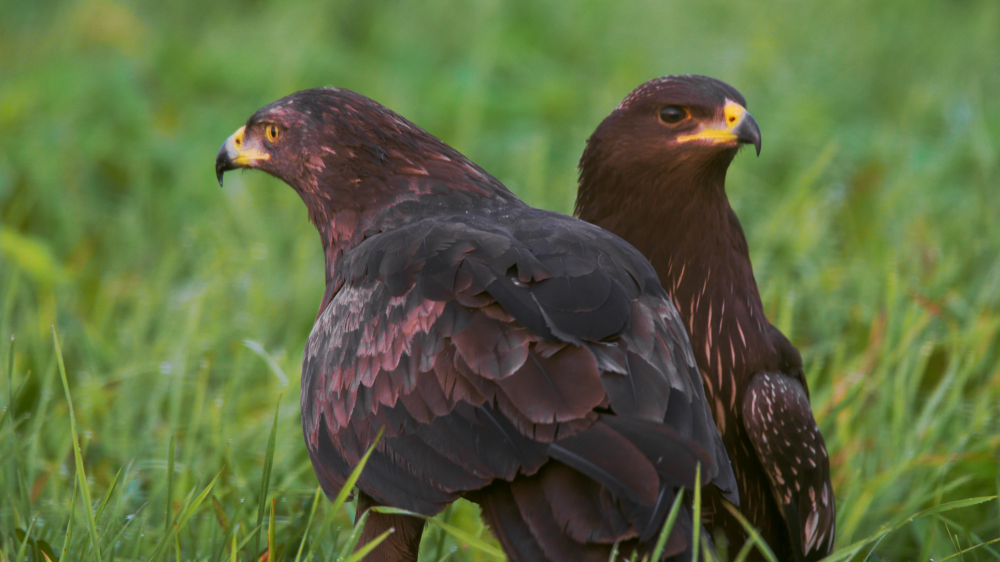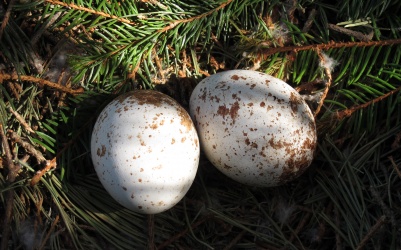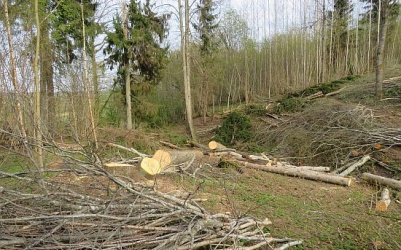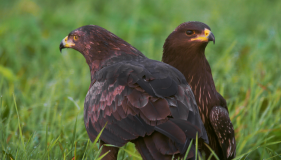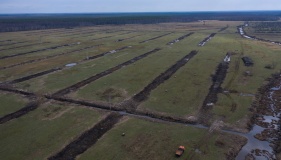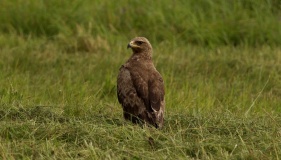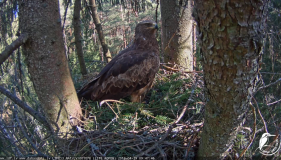On September 2021 Latvian Fund for Nature concluded EU LIFE programme project “LIFE AQPOM. Conservation arrangements for lesser spotted eagle in Latvia” which has been a very important step towards conservation of the species. Latvia is home to a third of EU lesser spotted eagles (Clanga pomarina) and therefore a very important area for species conservation on European scale. During the five years of the project significant work has been done in order to restore habitats suitable for lesser spotted eagle, 500 new lesser spotted eagle nests have been found, more than 400 microreserves established, also species protection plan has been updated. Besides the work done on conservation side, the project also enlightened several significant shortcomings of nature protection system in Latvia. Comprehensive review of project results is available in Layman’s report. Complete report of project’s results is available here.
Project “Conservation arrangements for lesser spotted eagle in Latvia” commenced in 2016 when lesser spotted eagle probably was known only amongst nature experts and ornithologists. Today we can say that Latvian society in general and also forest owners are much more knowledgeable regarding lesser spotted eagle.
The project has ensured that now lesser spotted eagle has more suitable breeding and feeding habitats – habitat restoration works have been carried out in two Natura 2000 territories. In Grīvu sala ir Lubāna wetland complex the natural hydrological regimen typical for floodplains has been restored by filling the drainage ditches in total length of 30 km, also 57 ha of natural grasslands have been restored. Now the territories are suitable for grazing and ploughing thus can bring economic advantages to their owners as well are favourable for lesser spotted eagle. It is expected that also biodiversity here will improve – more and more plants that are typical for natural grasslands will emerge, various meadow birds will nest and feed.
In the autumn of 2020, the search for lesser spotted eagle nests implemented within the framework of the LIFE AQPOM project was completed – this is one of the largest measures for identifying bird nesting sites ever implemented in the territory of Latvia. The experts have discovered 543 new and unprotected nests. This activity has significantly improved the knowledge about the distribution of species in Latvia, especially in Sēlija and western and north-western Vidzeme. Currenly there are around 4000 lesser spotted eagle pairs nesting in Latvia.
Most of the newly discovered nests now are also protected – 467 microreserves have been proposed and established by State Forest service (or Nature protection board in specific cases). Microreserves are small protected territories in nesting area where it is prohibited to carry out forestry activities (only removal of dead wood in small amounts is allowed).
It should be noted that establishment of microreserves during the project created tension from the side of forest owners who were not satisfied that economic activity was not allowed in the microreserve territories, but adequate compensations were not provided. Latvian Fund for Nature also agrees that compensation system in Latvia should be improved therefore encouraged Ministry of Environmental Protection and Regional Development to pay attention to this issue. The ministry created a working group on compensation issue and proposals for system improvements have been developed. We expect that the ministry will bring these proposals to life thus solving one of the most significant problems that currently creates obstacles for successful implementation of nature conservation measures.
Unfortunately project experts also found that around 10% of all unprotected nests have been impacted by forestry, in many cases resulting in destroyed habitats. During the project we have submitted information about destroyed nests to the responsible institutions as well as provided suggestions for solution of this systemic problem.
Another significant work done by the project was updating the species protection plan and its approval in the ministry of Environmental protection and regional development. Also a publication in scientific journal has been published, artificial nests set up and a nature documentary “Lesser spotted eagles in Latvia” produced.
Jānis Ķuze, project leader: “Work on the conservation of lesser spotted eagle in Latvia must be continued, and the project has laid a solid foundation for this. The species protection action plan developed provides recommendations for both practical habitat protection measures and changes in legislation. The small areal, wintering on another continent and the risks associated with migration, declining numbers and very intensive habitat conversion in nesting areas in the second half of the 20th century and the beginning of the 21st century, as well as low nesting success, places the lesser spotted eagle in Europe and Latvia in the category of specially protected bird species, the protection and research of which will continue to receive increased attention.”


